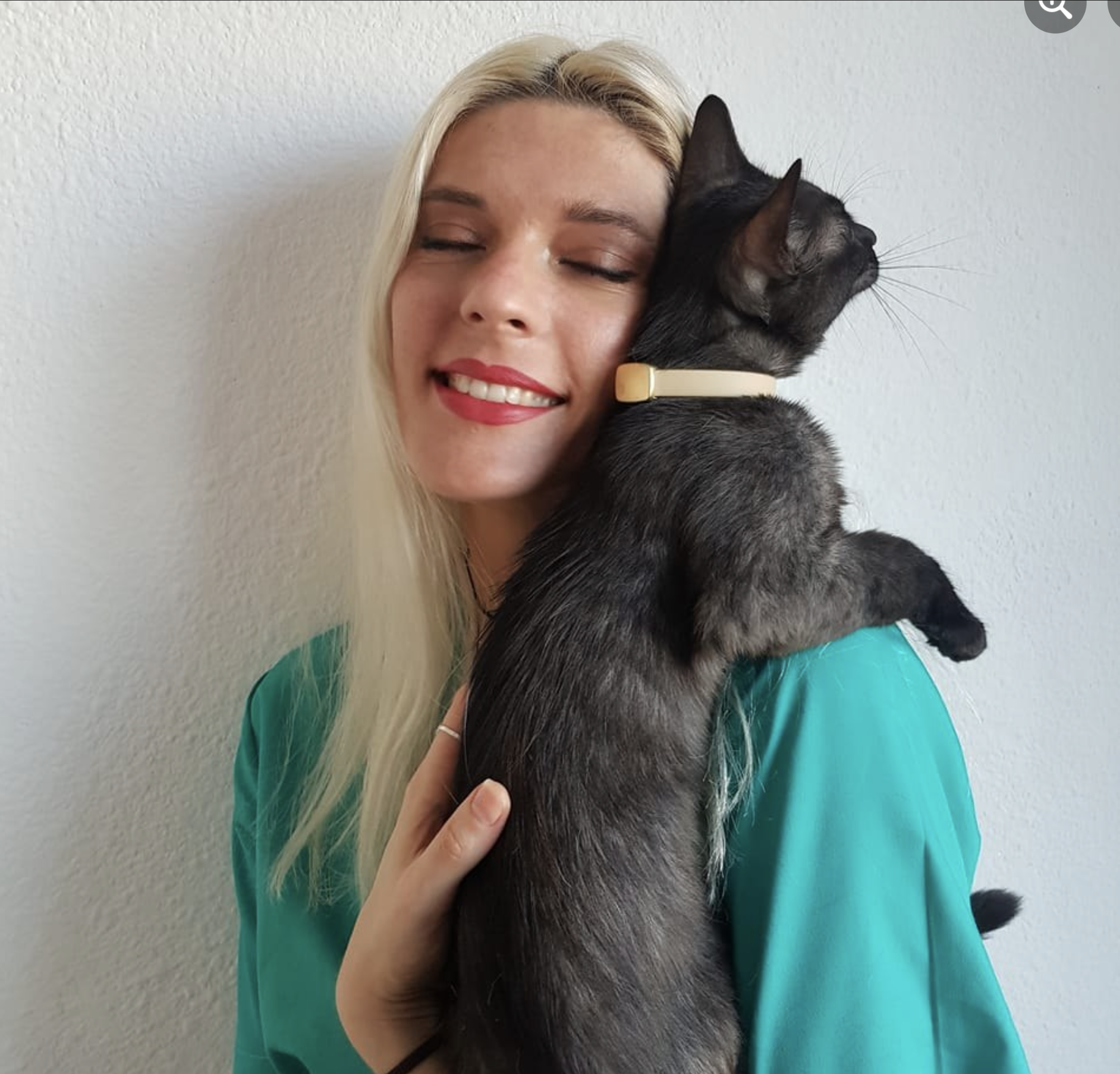Feeding your cat leftovers, overfeeding, or offering a diet low in essential nutrients or moisture can lead to health problems that shorten your cat’s life by at least a few years. Poor nutrition can lead to obesity, diabetes, anorexia, kidney disease, stomach issues, unwanted behavior, and others.
This guide will help you spot the mistakes you make when feeding your cat. After all, every pet owner wants for their beloved fluff to live a beautiful and healthy life as long as possible!
As a veterinarian, I have worked with cats for over 13 years, and one of the most common mistakes cat owners make is buying cheap food and offering it in excess. This combo is deadly! I can tell you for sure that cats do not need much to lead a healthy life. A proper diet, fresh water, daily exercise or playtime, and a good nap are all they need to lead a healthy and happy life.
Here are 5 most common mistakes in cat nutrition that can shorten their lifespan:
Overfeeding
Overfeeding is the first mistake pet owners make. Some cats will eat as much food as you give them. Many cat owners believe that if they offer more food, their pets will feel super loved. On the contrary, the greatest sign of love is when you ensure your cat receives the amount of food her body needs to stay healthy. The proper feeding of your cat should start from the earliest months of life, but this does not prevent you from adopting better feeding practices at any time in your pet’s life.
The daily amount of food varies depending on the breed, personality, age, weight, and physical activity of your cat. For example, an old and sedentary cat consumes less food than a young and active cat. The rule states that a healthy adult cat with a normal lifestyle should consume between 15-20 grams/kg (2.2 lbs.) body weight daily. Quality food has this information on the packaging.
Overfeeding is the main cause of obesity in cats. Obese cats can develop health conditions such as diabetes1, heart disease, and breathing difficulties at an older age, which will shorten their lifespan to 5-10 years. Overeating can also lead to liver disease, pancreatic disease, or gastrointestinal problems.
To stop overfeeding, avoid leaving her food out 24/7 and/or feeding her leftovers from the dinner table. Under no circumstances should you let your cat persuade you with her hunger meows between meals. This behavior is normal, considering that your cat is used to receiving food non-stop. In time, it will get used to the new lifestyle.
There are three key principles you should follow to keep your cat in shape:2
- The way you feed your pet should reflect the way it eats naturally (in the wild) – feed your cat at least three small meals a day.
- Feeding should promote your cat’s mental, behavioral, and physical health – use foraging toys (food puzzles) because they increase activity and encourage problem-solving. It can also help your cat lose some weight.
- If you have the possibility, offer your cat the option to evaluate its preferences regarding the place where you feed her, food dishes, water bowls, type of food, etc.
The lack of moisture in their diet – dry vs. wet food
Cats’ prey in the wild contains 70% water. Canned food contains about 78% water, and dry food only about 10%. The lack of water in your cat’s diet can lead to chronic dehydration, which in turn can cause kidney problems and/or the formation of stones.
Cats diagnosed with kidney disease live on average about two years from the moment of diagnosis. Bladder stones can cause severe complications because they can get stuck in the urethra when cats want to urinate. Urinary blockage is considered a medical emergency because cats can die in a few days due to the toxins that accumulate in their blood.
A cat eating dry food should normally consume about 100 ml of water per 2.5 kg (~5 lbs.) of body weight per day.8 Here is what to do to promote your cat’s water intake:
- Offer your cat wet food, if she has a diet based on dry food.
- Place several water bowls around the house, especially in places where your cat likes to hang out.
- Purchase a water fountain.
- Make sure your feline has fresh water daily and at her discretion.
- Give your cat a diet that helps prevent stones in the urinary tract.
Offering toxic or harmful food
Most cats are greedy, and their temptation to taste your food is great. But before giving your cat your food, it is good to know that cooked food, ham, canned food, and dairy products are not healthy for cats.
In addition, many of the ingredients we consume can be toxic to cats, such as garlic, onions, raisins, grapes, or avocados (and the list goes on).3 Also, cats should not eat chocolate, spicy or salty foods. An improper diet can lead to health problems such as obesity, poisoning, or digestive problems, shortening their lifespan by a few years at least.
Cocoa (Theobroma cacao) from chocolate contains theobromine, a toxic substance for cats. Although the adverse effects are proportional to the amount of chocolate a pet consumes, in severe cases, it can lead to convulsions and death.4 The darker the chocolate, the more theobromine it contains.
Dairy products can lead to digestive problems because most adult cats are lactose intolerant. Although this does not shorten your cat’s life directly, the resulting diarrhea and vomiting can lead to dehydration and loss of nutrients, and in some cases, to death (if consumed in excess and long term).
Fish is another food that most cats enjoy and would consume everyday. However, a diet based only on fish can lead to anemia, thiamine (vitamin B1) deficiency5, or mercury poisoning.
What you have to do is to pay attention to what you feed your cat, and don’t let her trick you with her big round eyes.
Feeding your cat a diet that lacks essential nutrients
We often look at our wallets when choosing our cat’s diet, but this behavior leads to various health problems that can shorten your pet’s life. Diets poor in nutrients can lead to vitamin and mineral deficiencies, which in turn can cause nervous signs, obesity, lethargy, or impaired organ function. When choosing a diet for your cat, you must take into account the following aspects:
- The quality of the food you feed your cat – feed your cat a diet that contains at least 30% protein (for kittens) and 26% (for adult cats). Also, avoid food that contains too many ingredients without nutritional value (starch, sugar, and carbohydrates), which are added only to increase the volume of the food but have no nutritional benefits – they are also known as fillers. These ingredients can lead to digestive problems and obesity. Carbs in cats’ diets are accepted as long as they don’t make one of the main ingredients. When it comes to wet vs. dry food, remember that each type has its own advantages and disadvantages. If you are choosing to feed your cat only wet food, keep in mind that in the long run, it can lead to dental problems. On the other hand, feeding only a dry diet can lead to urinary problems (this type of food lacks moisture). Overall, quality food can prevent some of the health problems common to cats and save you from expensive visits to the vet in the future.
- Your cat’s age – there is special food for each age category: kittens, adults, and senior cats. These diets contain the essential ingredients and nutrients to ensure the necessary intake for each age category. For example, if your cat is a senior and you give it kitten food, you risk making her fat – kitten food has more vitamins, minerals, and proteins in its composition to ensure healthy growth.
- If your cat is neutered/spayed or not – you might think it is ok to feed your sterilized cat food for adult cats. But it’s not like that. Sterilized cats need special food because they are more prone to fattening.6
- Health status – cats that are more prone to certain diseases need their diet to be adapted to prevent recurring health problems, such as urinary diseases or food allergies. If your cat has been diagnosed with a specific disease, your vet will probably recommend a prescription diet to help your little feline recover faster.
Failure to follow these small rules will shorten your cat’s life by at least a couple of years, but if you comply with these minimum requirements, your cat will live a long and healthy life.
Changing your cat’s diet too often
It is not a bad thing to change your cat’s diet from time to time and offer her some variety. However, cats tend to retain food preferences throughout their lives.7 Changing your cat’s food too often can lead to digestive problems, such as vomiting, bloating, or diarrhea.
If your cat has not adapted to the new food, it is possible to develop gastrointestinal problems. For this reason, cat owners often conclude the food is to blame and change it again, and in this way, their cat will never get to adapt to a new diet.
To avoid these unwanted effects, you can change your cat’s food gradually, either mixing it with the old one or alternating between the two. For minimum adverse effects, mix 25% of the new food with 75% of the food she is already used to. As she gets used to this mixture, increase the proportions of the new food. In a few days, your cat will only eat the new food without realizing it has been changed.
Conclusion
Seemingly small mistakes like overfeeding, offering diets that lack essential nutrients or moisture, or changing your cat’s diet too often could seriously impact your pet’s health and lifespan in the long run. To avoid this, make sure your cat eats a quality diet that meets her nutritional needs, you don’t overfeed her or feed her toxic ingredients, and give her plenty of fresh water at her disposal. In this way, your cat will live a longer and healthier life!


